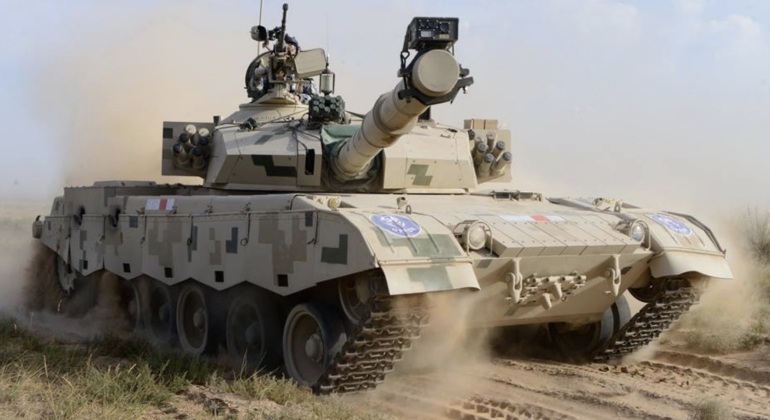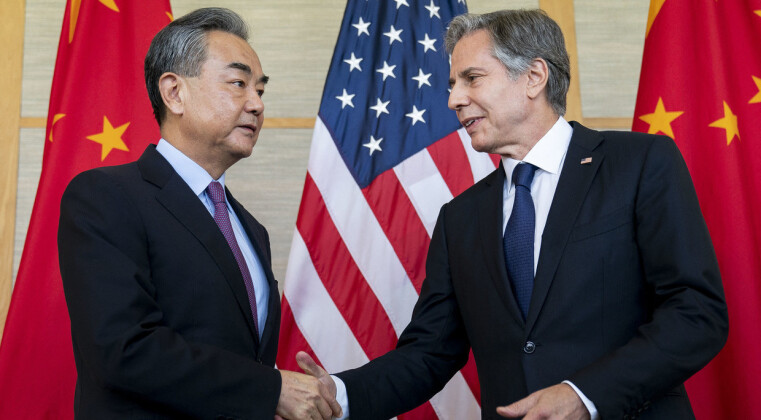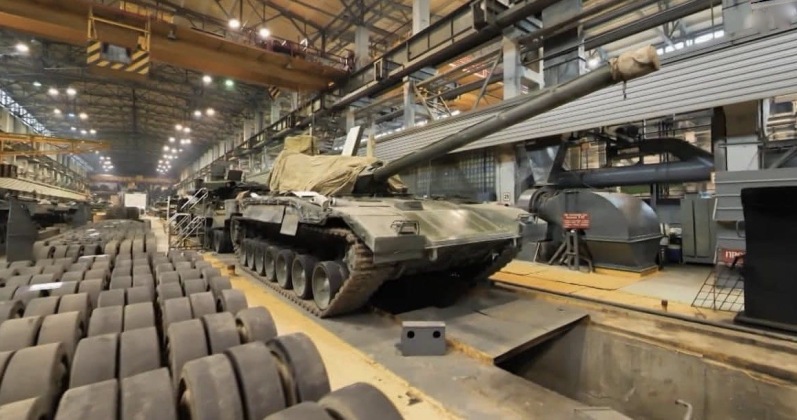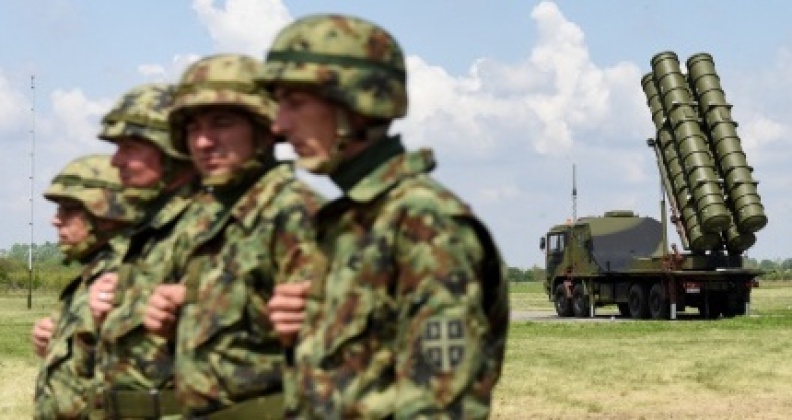Military Watch:
How China Can Arm Russia Without Making Weapons Shipments: Backing Moscow While Avoiding U.S. Red Lines

Chinese Type 96 Tank
On February 19 U.S. Secretary of State Antony Blinken and ambassador to the United Nations Linda Thomas-Greenfield issued separate warnings that any moves by China to provide armaments to its neighbour Russia would be seen as a “red line” by Washington. “We … have to be clear that if there are any thoughts and efforts by the Chinese and others to provide lethal support to the Russians in their brutal attack against Ukraine, that that is unacceptable,” Thomas-Greenfield told CNN, while Secretary Blinken stressed that Washington remained “very concerned that China’s considering providing lethal support to Russia.”
On February 19 U.S. Secretary of State Antony Blinken and ambassador to the United Nations Linda Thomas-Greenfield issued separate warnings that any moves by China to provide armaments to its neighbour Russia would be seen as a “red line” by Washington. “We … have to be clear that if there are any thoughts and efforts by the Chinese and others to provide lethal support to the Russians in their brutal attack against Ukraine, that that is unacceptable,” Thomas-Greenfield told CNN, while Secretary Blinken stressed that Washington remained “very concerned that China’s considering providing lethal support to Russia.”
Blinken added that when speaking to China’s top diplomat State Councillor Wang Yi on the sidelines of the Munich Security Conference: “I made clear that that would have serious consequences in our relationship,” claiming that China had “not crossed that line yet.”


U.S. State Secretary Antony Blinken and Chinese State Councillor Wang Yi
Approaching the end of its first year, the Russian-Ukrainian War has seen Ukraine receive tens of billions of dollars worth of military equipment from across the Western world, as well as tremendous personnel, intelligence and other contributions.
Approaching the end of its first year, the Russian-Ukrainian War has seen Ukraine receive tens of billions of dollars worth of military equipment from across the Western world, as well as tremendous personnel, intelligence and other contributions.
These have ranged from hundreds of British Royal Marines deployed to carry out high risk operations alongside Ukrainian government forces from April, to the deployment of almost NATO’s entire satellite network to provide key intelligence, communications support, and targeting data.
The New York Times reported that a CIA ‘stealth network’ was at the crux of the war, referring to the U.S. as establishing within Ukraine “a stealthy network of commandos and spies rushing to provide weapons, intelligence and training... C.I.A. personnel have continued to operate in the country secretly, mostly in the capital, Kiev, directing much of the massive amounts of intelligence the United States is sharing with Ukrainian forces.”
The “signs of their stealthy logistics, training and intelligence support are tangible on the battlefield,” the Times observed. “Commandos from other NATO countries, including Britain, France, Canada and Lithuania, also have been working inside Ukraine... training and advising Ukrainian troops and providing an on-the-ground conduit for weapons and other aid,” it added, stressing the sheer “scale of the secretive effort to assist Ukraine that is underway.”
The “signs of their stealthy logistics, training and intelligence support are tangible on the battlefield,” the Times observed. “Commandos from other NATO countries, including Britain, France, Canada and Lithuania, also have been working inside Ukraine... training and advising Ukrainian troops and providing an on-the-ground conduit for weapons and other aid,” it added, stressing the sheer “scale of the secretive effort to assist Ukraine that is underway.”
With the Western world very heavily invested in ensuring a Russian defeat, preventing third countries such as China from supporting Russia has been at the centre of Washington and other NATO members’ diplomatic efforts over the past year.


Russian Tanks in Production at the Uralvagonzavod Factory
In contrast to the tremendous Western backing Ukraine has gained, the Russian war effort has received only limited support from abroad namely from North Korea and Iran - the former which has reportedly supplied artillery rounds while the latter provided a range of combat drones and is reportedly considered providing ballistic missiles.
In contrast to the tremendous Western backing Ukraine has gained, the Russian war effort has received only limited support from abroad namely from North Korea and Iran - the former which has reportedly supplied artillery rounds while the latter provided a range of combat drones and is reportedly considered providing ballistic missiles.
Although China’s defence sector is the largest in the world outside the United States, and in most areas is considered significantly more advanced than that of Russia, direct provision of Chinese armaments remains unlikely for political reasons.
Beyond economic support and provision of key technologies to Russia’s civilian economy to counter the impacts of Western economic sanctions, China has a number of options to help ensure that the Russian Military is well armed without providing weapons directly.
Russian arms factories have operated at a small fraction of their Soviet era capacities over the past 30 years in almost all areas of the defence sector, and helping Russia restore these facilities and potentially modernise them with new Chinese equipment could allow it to produce for it needs independently.
Russian arms factories have operated at a small fraction of their Soviet era capacities over the past 30 years in almost all areas of the defence sector, and helping Russia restore these facilities and potentially modernise them with new Chinese equipment could allow it to produce for it needs independently.
Taking armour as an example, the Russian Army received just 10 new tanks from production lines in the 2010s, and while producing well over 100 per year for export, this was just a small fraction of the more than 3000 which its Soviet built factories could comfortably complete every year in the Cold War era. Assisting restoration work, and ensuring Russia remains well supplied with semiconductors and other key imported components, could allow it to quickly replenish the several hundred tanks reportedly lost in Ukraine. This applies across other areas of the defence sector where Soviet era production lines, if restored, could easily very quickly re arm Russia.


HQ-22 Battery in Serbia
A further means China could support Russia’s rearmament indirectly would be to support third parties to do so. Iran for example could be provided guarantees of support against retaliatory Western sanctions if it agrees to provide ballistic missiles to Russia. Its large quantites of Russian-sourced hardware, for example T-72B tanks and S-300 air defence systems, could be resold to Russia much more easily should China be willing to replace then in the Iranian arsenal with more modern VT-4 tanks and HQ-9 air defence systems.
A further means China could support Russia’s rearmament indirectly would be to support third parties to do so. Iran for example could be provided guarantees of support against retaliatory Western sanctions if it agrees to provide ballistic missiles to Russia. Its large quantites of Russian-sourced hardware, for example T-72B tanks and S-300 air defence systems, could be resold to Russia much more easily should China be willing to replace then in the Iranian arsenal with more modern VT-4 tanks and HQ-9 air defence systems.
A UN arms embargo on North Korea would make provision of similar support more difficult, but not impossible. Other third party countries such as Myanmar may also be willing to send armaments to Russia if they are replenished by China.
While China provided new HQ-22 air defence systems to Serbia in April, demonstrating the very significant airlift capabilities of its new Y-20 transports across continents, Beijing could further support both Serbia and possibly even Belarus which remain the only European countries not aligned with NATO.
While China provided new HQ-22 air defence systems to Serbia in April, demonstrating the very significant airlift capabilities of its new Y-20 transports across continents, Beijing could further support both Serbia and possibly even Belarus which remain the only European countries not aligned with NATO.
Arming Belarus, however, may bring China too close to NATO’s red lines for it to consider crossing due to the country’s formation of a Union State with Russia and provision of basing rights to Russian units operating in Ukraine.
Other means of support could include providing spare parts for Russian equipment, for example Su-27 fighters which are operated by both countries - but which China has largely retired from service. Transports such as the Y-20 could be loaned to Russian firms to take pressure off the Russia’s own Il-76 and An-124 transport fleets, and Chinese experts could support the refurbishment and repair of Russian weaponry or help provide the training and modern tools needed to help the Russians to do so directly.
Beijing thus has a wide range of options, some more risky in terms of its relations with the West and others less so, to materially support the Russian war effort while avoiding providing military equipment to the Russian Military directly.
Redlines?
ReplyDeleteDrawn by who & with who's definitions?
Ooop… Western demoNcratic gameplay!